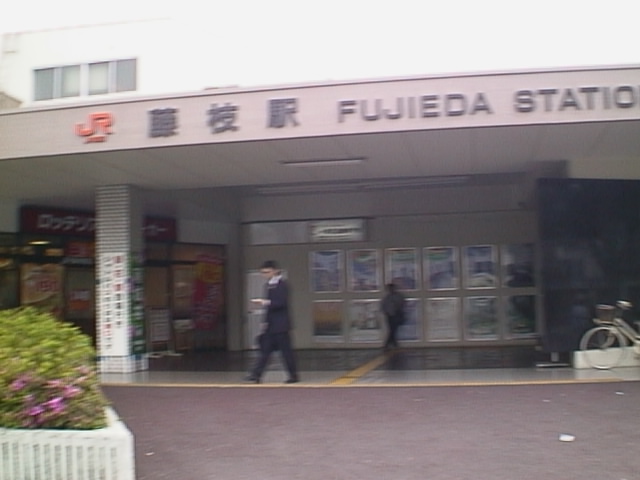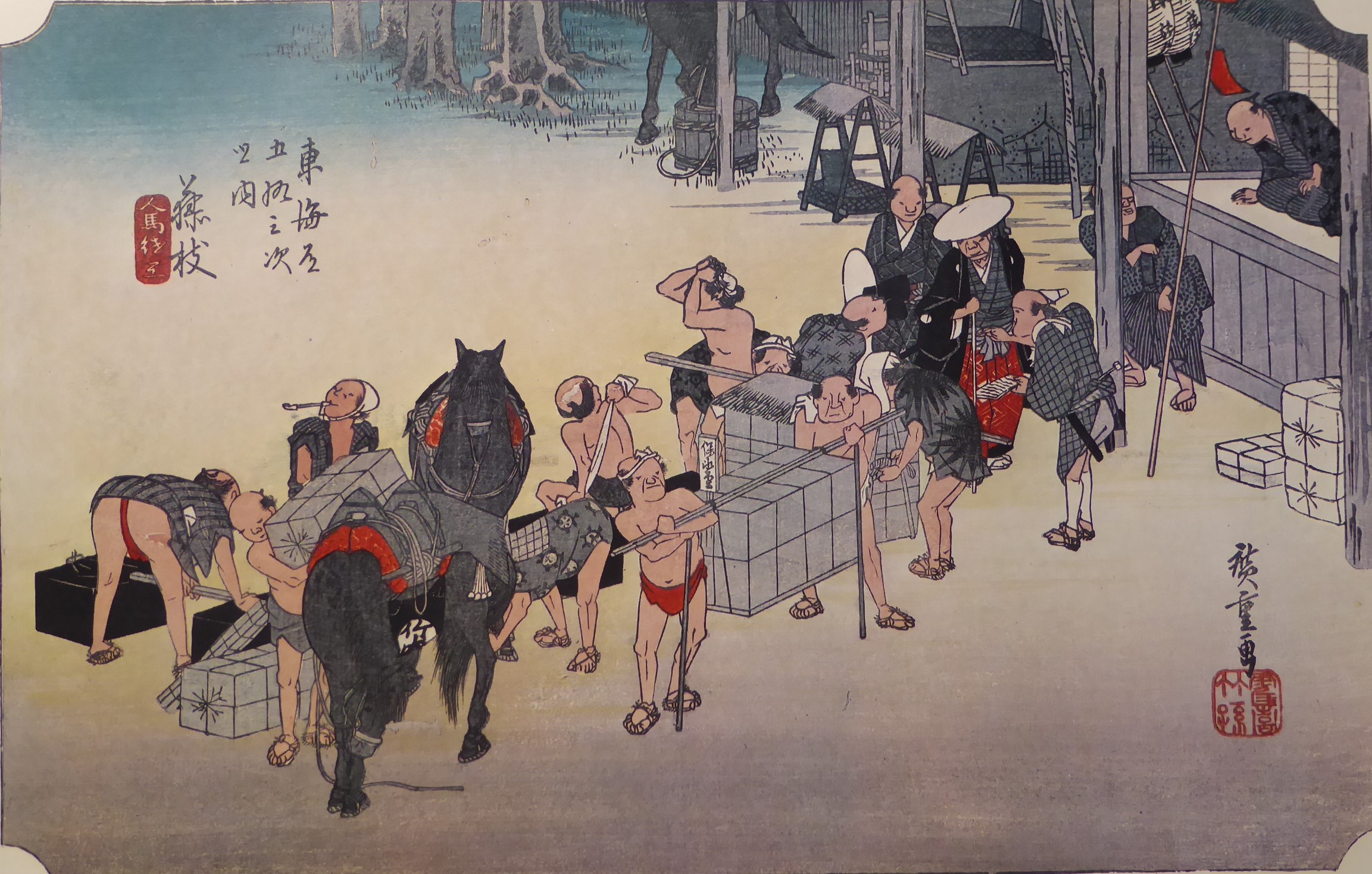Explanation of the Fifty-three Stations of the Tokaido 23 Fujieda
8.7km from Shimada to Fujieda, 34°52′11.3″N 138°15′9.8″E
Fujieda is the 22nd station on the Fifty-three Stations of the Tokaido.
It is located in the area along the mountains of present-day Fujieda City, Shizuoka Prefecture, from Honmachi to Ote.
Fujieda is a city in an area sandwiched between the Abe River and the Oi River.
It flourished as a castle town of Tanaka Castle, where successive castle lords held important positions in the Edo Shogunate.
It also flourished as a branch point of the Tanuma Highway leading to Sagara, a salt-producing region.
The station is about 2km long and was a large station with about 670 inns and merchants.
It was an intersection with roads connecting the mountainous and coastal areas, and many mountain and sea delicacies were delivered here, making it a bustling place with many travelers and merchants.
When the Tokaido Main Line was constructed in the Meiji era, the original route was planned to be Uzunoya Pass – Fujieda – Shimada.
The route was chosen to be Okuzure – Yaizu – Shimada because of the rough terrain and the long detour.
Fujieda Station, which opened in 1889, was located about 3km away from the post town.
Without a station, the town stagnated as a post town and commercial area.
In 1913, the Fujiso Railway connected to the old post town, and Fujieda Honmachi Station, Ote Station, etc. were established.
However, it was abolished in 1964.
Although the area was not blessed with rail transportation, the Fujieda Bypass and other roads were constructed.
Many historical tourist sites representing Fujieda City remain, such as Tanaka Castle House, which Tokugawa Ieyasu often visited for falconry, and Daikeiji Temple, where the Kuon no Matsu, a natural monument of Shizuoka Prefecture, is located.
Tanaka Castle was built about 500 years ago by the local powerful clan, Isshiki, who was ordered by the Imagawa clan to expand his mansion and turn it into a castle. It is a circular castle with a diameter of about 600m, with four moats and four enclosures (Ninomaru, Sannomaru, and Sotomaru) arranged in a concentric circle around the main enclosure.
It is a rare castle shape in Japan.
It was abandoned after the Meiji Restoration.
Currently, an elementary school has been built on the site of the main enclosure.
The castle itself cannot be seen.
The gardens of the Shimoyashiki, where the castle lord’s villa was located, have been restored as the “Historic Site Tanaka Castle Shimoyashiki.”
Buildings related to Tanaka Castle, such as the Honmaru turret and teahouse, have been relocated and restored within the castle, and you can see historically valuable buildings and documents.
Currently, the town is centered around soccer.
Fujieda Higashi High School was famous as a strong soccer team.
Fujieda MYFC, which belongs to J2, is based here.
Avispa Fukuoka, a member of the J-League, was based in Fujieda City under the team name Fujieda Brooks.
① “Hoeido version”
This depicts the reassembly of luggage for a relay race at an inn’s wholesaler’s shop.
The subtitle reads “Relay of Man and Horse.”
Relay of man and horse means changing the laborer and horse for the luggage being carried.
The wholesaler’s shop was the place where the reassembly of men and horses and the transportation of cargo were handled.
The town officials decided the wages for the luggage, changed horses, and added laborers.
The luggage is being handed over as an official from the wholesaler’s shop in the upper right looks on.
Various figures are depicted, such as those wiping off sweat, taking a rest, and those reassembling the luggage.
A laborer called Kumosuke is in action.
The nameplate on the luggage carried by the laborer reads “Hoeido,” the publisher.
The characters “Takeuchi” can be seen on the horse’s belly, in honor of the publisher’s owner, Magohachi Takeuchi.
②”Gyousyo version”
A scene of people ferrying across the Seto River.
The Seto River is a narrow, shallow river on the outskirts of the post town.
The painting depicts a traveler being carried by a porter.
③ “Reisho version”
A scene of people panicking in a rain shower along a row of pine trees.
It resembles the white rain at Shono-juku.
④ “Hokusai version”
The Tokaido 23 marker is drawn under a large pine tree.
⑤ “Travel image”
JR Fujieda Station. The image is blurred.
⑥ “Stamp image”
A stamp from JR Fujieda Station.
Hoeido version

Gyousyo version

Reisho version

Hokusai version

Travel image

Stamp image



